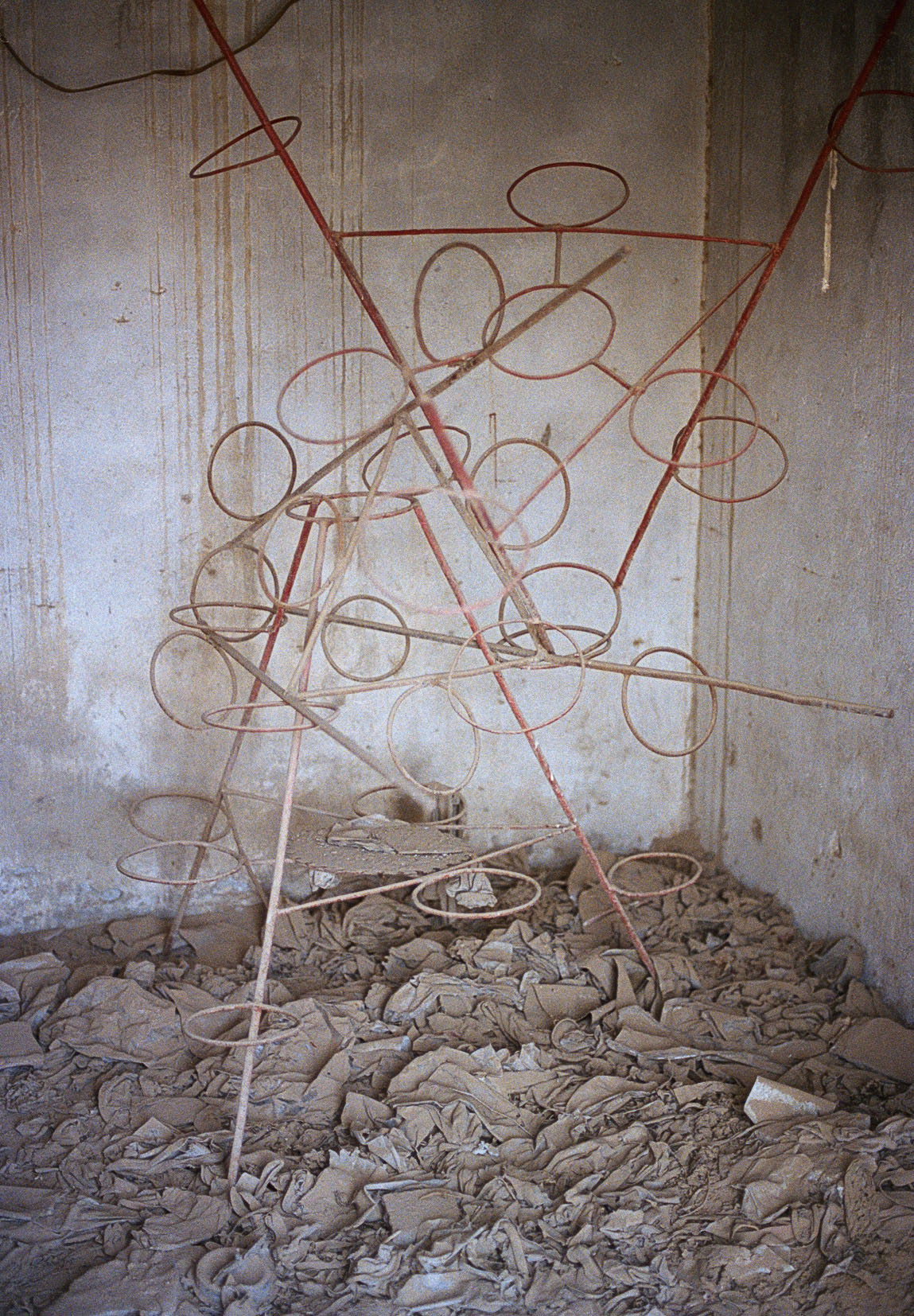Masood Kamandy
My family called this place the fabrika or ‘factory.’
I was 21 when I took this photograph in Kabul, Afghanistan. It was September of 2002, and the events of the year prior had led me to visit Kabul for the first time. The location is my grandfather’s abandoned plastics factory, called, matter-of-factly, Kabul Plastic.
The image serves as a link between my love of art and my heritage. It hints at modernism, pointing to Marcel Duchamp’s readymades or maybe Piet Mondrian’s or Maholy-Nagy’s geometric compositions. The difference is that this image is a document, not an artwork. These forms are painful relics of a failed modernism, and not celebrated artefacts of 1920s European bohemianism. The context of this image is unavoidably war, real loss, and intergenerational trauma.
Decades worth of dust covered everything. My family abandoned the factory after my grandfather was imprisoned and executed, alongside his brothers and oldest son, by Afghanistan’s communist government in 1978.
I love this picture. I love the streaks on the wall, the dust, the shapes, and the countless pieces of crumpled paper. I love the half-light coolness of the colors. I loved the moment when I took a breath and saw a strange beauty in so much horror.
